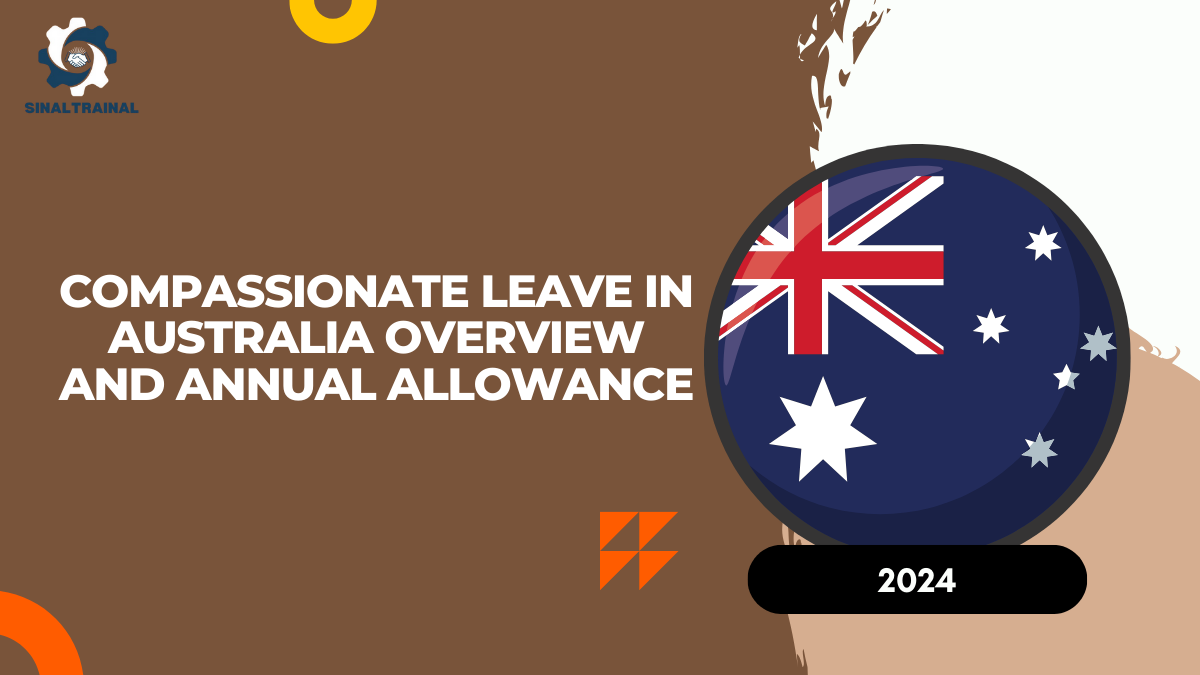Explore the critical details of Compassionate Leave in Australia, including its purpose and the number of leave days granted annually. It’s crucial to grasp the concept of compassionate leave to foster a workplace environment where employees feel supported during difficult times. Below is a comprehensive guide on compassionate leave in Australia, outlining its structure, eligibility, and associated rules.

Understanding Compassionate Leave in Australia
Employees working full-time or part-time are entitled to two days of compassionate leave each year. As stipulated by the National Employment Standards (NES), these two paid leave days are granted during critical events such as the death of a close relative or a family emergency. This provision forms part of the Fair Work Act. However, certain contract workers or those covered by specific agreements may not qualify for these leaves, although some employers may offer similar benefits based on individual contracts.
Permanent employees have the right to several types of leave, including paid personal carer’s leave, unpaid carer’s leave, and paid compassionate leave. These types of leave are designed to assist employees in managing personal crises, such as the death or illness of a loved one. On the other hand, casual workers are eligible only for unpaid carers and compassionate leave.
What is Compassionate Leave?
Compassionate leave is a specific category of leave distinct from other forms of leave, such as annual or sick leave. It is granted explicitly to employees facing a personal crisis. Often referred to as bereavement leave, employees can address personal severe matters. These leave days begin accruing from the employee’s first day of work and are intended to be used during temporary situations like illness or for personal issues requiring attention outside of work.
Compassionate leave does not count towards other accrued leave balances, meaning it is treated separately from other leave entitlements. Additionally, employees cannot cash out unused compassionate leave when they exit the company, so it is recommended to use this leave only when necessary.
Situations Where Compassionate Leave Can Be Taken
Employees may request compassionate leave under specific circumstances, which include:
- Personal illness or injury that prevents them from working
- Involvement in an unforeseen accident
- The need to care for or support an immediate family member due to illness or injury
Immediate family members eligible under compassionate leave policies include:
- Current or former spouse
- Biological or adopted children
- Parents and guardians
- Grandparents
- Siblings and grandchildren
Compassionate leave may also be used in the event of a family emergency or the sudden passing of a close relative.
Annual Compassionate Leave Entitlement
Employees must notify their employer as soon as possible when they intend to take compassionate leave. Providing specific reasons for the rest is essential, and in some cases, employers may request evidence to validate the need for leave, such as medical certificates or documentation of a family emergency.
Under the NES, employees are entitled to a maximum of 10 days of compassionate leave annually. Full-time employees receive this leave in either a single block or distributed over time. Part-time employees typically receive between 7 to 10 days of leave per year, depending on their hours worked. It’s important to note that public holidays and weekends are not counted towards compassionate leave.
Sick leave, on the other hand, accumulates from year to year. The 10 days of sick leave entitlement can be calculated as 1/26th of the employee’s yearly salary. If an employee exceeds the 10-day limit, their pay will be reduced accordingly for any additional days taken. Compassionate leave can be taken as a continuous two-day leave, split into two separate one-day leaves, or arranged in smaller segments, depending on what the employer agrees to.
Payment During Compassionate Leave
When taking compassionate leave, employees must be compensated at their base pay rate, which applies to the ordinary hours they work. However, this payment excludes:
- Bonuses or incentive payments
- Monetary allowances
- Overtime penalties
- Any other special allowances given to employees
For part-time or contract employees, compassionate leave is typically unpaid. The leave, in such cases, results in a salary deduction. If an employee does not use their allotted compassionate leave within a given year, it will carry over into the next year but will remain unpaid for part-time workers.
Click here to know more.

Arvind, an exam specialist with a passion for education, writes comprehensive articles on exam results and admit cards. His expertise ensures students receive reliable information and useful tips to excel in their exams.